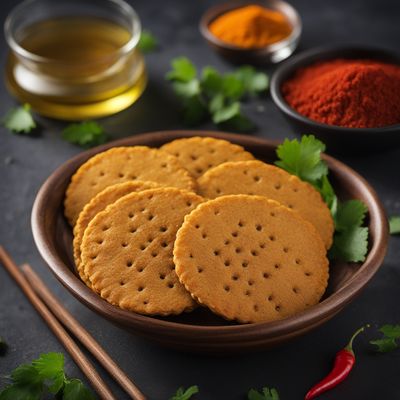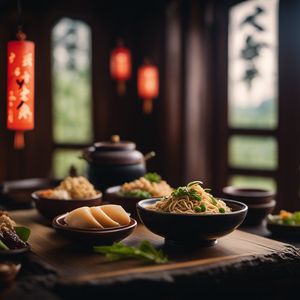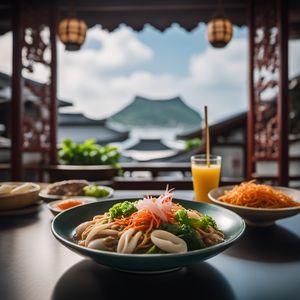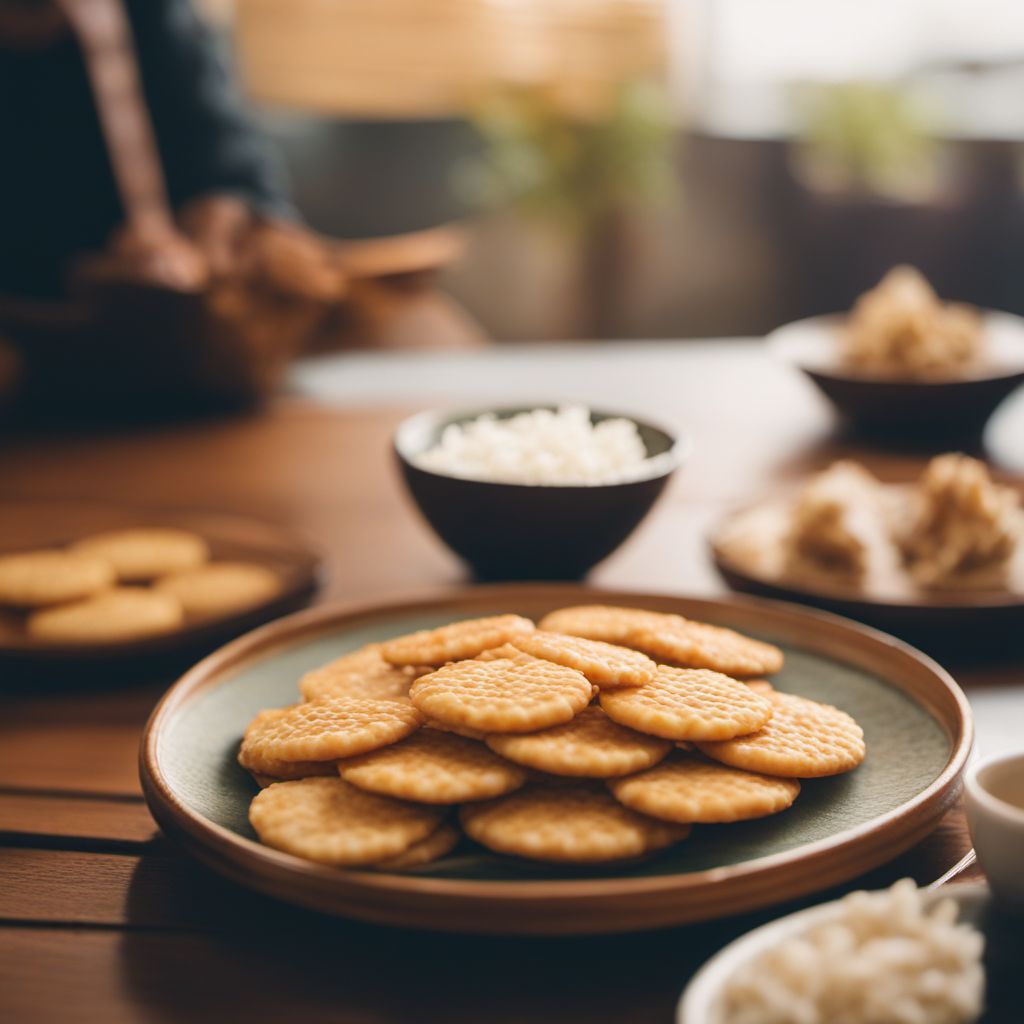
Dish
Jibachi senbei
Jibachi senbei is made by mixing rice flour with soy sauce and water to form a dough. The dough is then rolled out and cut into small circles. Dried shrimp is then placed on top of each circle and the crackers are baked until they are crispy and golden brown. This dish is typically served as a snack or appetizer.
Origins and history
Jibachi senbei is a traditional dish from the region of Kyushu in Japan. It is believed to have originated in the town of Nagasaki, which is known for its delicious cuisine. The dish is typically served with tea or sake and is a popular snack among locals and tourists alike.
Dietary considerations
This dish is suitable for vegetarians, but it is not suitable for those who are allergic to shellfish. It is also high in sodium, so it should be consumed in moderation.
Variations
There are many variations of Jibachi senbei, but the basic recipe remains the same. Some people use different types of seafood such as squid or octopus, while others use different types of seasonings such as wasabi or chili pepper. Some recipes also call for the addition of vegetables such as green onions or carrots.
Presentation and garnishing
Jibachi senbei is typically served on a platter or in a basket. The dish should be garnished with fresh herbs such as cilantro or green onions to add color and flavor. A sprinkle of sesame seeds can also be added for extra texture.
Tips & Tricks
When making Jibachi senbei, it is important to use high-quality ingredients. The rice flour should be fresh and the dried shrimp should be of good quality. The crackers should be baked until they are crispy and golden brown.
Side-dishes
Jibachi senbei is typically served as a snack or appetizer. It can be served on its own or with a side of tea or sake. Some people also serve it with a side of pickled vegetables or a salad.
Drink pairings
This dish pairs well with a light beer or a crisp white wine such as a Sauvignon Blanc or a Pinot Grigio. The beer or wine helps to cut through the richness of the dish and complements the flavors of the rice crackers and dried shrimp.
Delicious Jibachi senbei recipes
More dishes from this category... Browse all »

A-gei
Taiwanese cuisine

Abará
Brazilian cuisine
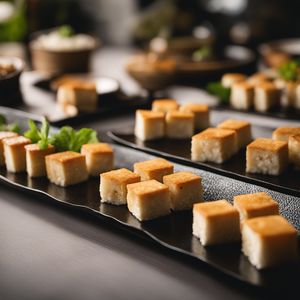
Aburaage
Japanese cuisine

Acciughe sotto pesto
Italian cuisine

Accra
West African cuisine

Aggala
Indian cuisine

Airplane Olive
Greek cuisine

Alaisa fa'apopo
Samoan cuisine

